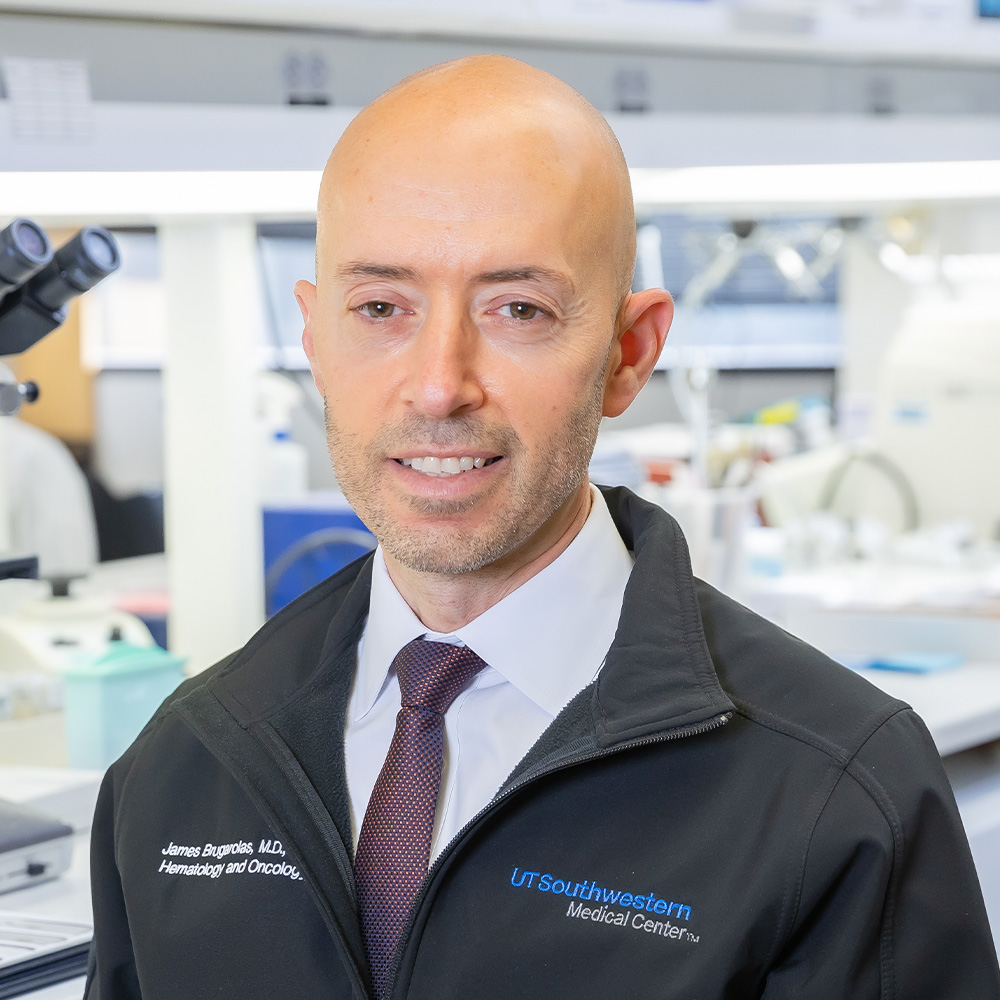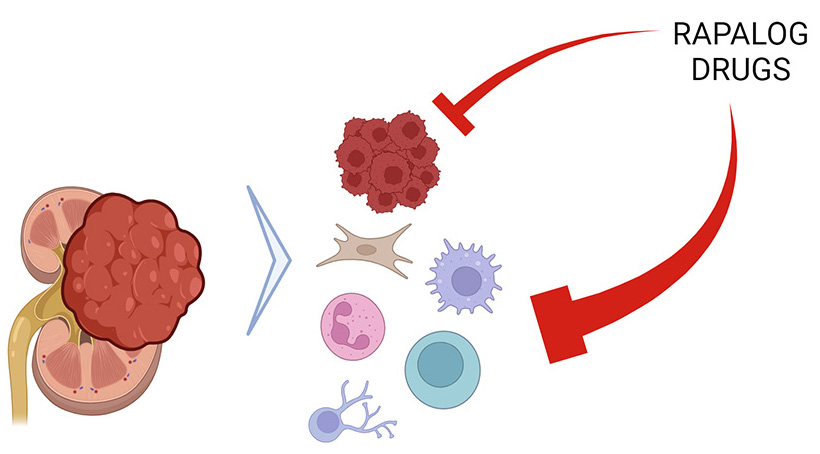Study reveals unexpected mechanism of drug resistance in kidney cancer
UTSW team discovers that cells in tumor microenvironment play critical role in effectiveness of rapalogs
DALLAS – June 11, 2024 – For nearly two decades, how kidney cancer becomes resistant to rapalog drugs has baffled the scientific community. Now a study by researchers at UT Southwestern Medical Center’s Kidney Cancer Program sheds light. Published in the Proceedings of the National Academy of Sciences, the study “Unconventional Mechanism of Action and Resistance to Rapalogs in Renal Cancer” provides evidence for an unanticipated role for nontumor cells in mediating the therapeutic effects of rapalogs in kidney cancer.
Rapalogs (or rapamycin analogs) are used to treat renal cell carcinoma (RCC) and other tumor types, but their utility is hindered because tumors become resistant over time. Why this occurs has remained unknown since the drugs were first introduced for kidney cancer treatment in 2007.
Resistance to targeted therapies, such as rapalogs, often involves mutations in the drug target that interfere with drug binding. However, mTOR, the drug target, is not mutated when RCC tumors become resistant.

To model resistance to rapalogs, investigators in the Brugarolas Lab leveraged their SPORE-funded tumorgraft program, one of the largest such programs worldwide. As they had done previously when evaluating resistance against HIF2α-blocking drugs (another class of FDA-approved drugs for RCC), they treated mice transplanted with patient RCC tumors with rapamycin until resistance developed. While the drug target is often reactivated when resistance develops, unexpectedly, mTOR remained suppressed in tumor cells.
Previous experiments with HIF2α-blocking drugs revealed that drug resistance resulted from a mutation in HIF2α that allowed it to remain active even in drug-treated tumor cells, and the same results were subsequently found in drug resistant patients’ tumors.
However, when resistance against rapamycin developed, the drug still blocked mTOR activity in tumor cells. Strikingly, however, mTOR became reactivated in cells around the tumor, known as the tumor microenvironment (TME).
To determine the role of the TME, investigators engineered mice to make a form of mTOR that was resistant to rapamycin. The researchers hypothesized that if suppression of mTOR in the TME was important for rapalog activity, patient tumors should be less responsive to the drug when transplanted into these mice.

The investigators found that rapamycin was far less effective at killing transplanted RCC tumors in these mice. Thus, even though mTOR was readily inhibited in the transplanted human tumor cells, failure to inhibit mTOR in the TME, which develops from the host mice, caused drug resistance.
These studies merged two traditional but distinct approaches to cancer modeling – tumor transplantation and genetic engineering – and showed that the TME plays a critical role in mediating the activity of rapalogs.
The findings pave the way for novel therapeutic strategies that target the tumor microenvironment. “By implicating tumor support cells in drug resistance, this study addresses a longstanding question since the first rapalog approval nearly two decades ago,” said lead author James Brugarolas, M.D., Ph.D., Professor of Internal Medicine in the Division of Hematology and Oncology and founding Director of the Kidney Cancer Program at the Harold C. Simmons Comprehensive Cancer Center at UT Southwestern.
The study was supported by a National Cancer Institute Specialized Program of Research Excellence (SPORE) grant (P50CA196516) and the National Cancer Institute (NCI) Cancer Center Support Grant (P30CA142543).
Other UTSW researchers who contributed to this study are Payal Kapur, M.D., Professor of Pathology and Urology; Robert E. Hammer, Ph.D., Professor of Biochemistry; postdoctoral fellows Ramesh Butti, Ph.D., and Arijit Mal, Ph.D.; Vanina Toffessi Tcheuyap, M.S., Research Associate; Mylinh Nguyen, M.S., Senior Research Scientist; Alana Christie, M.S., Biostatistical Consultant; and Jiwoong Kim, M.S., Computational Biologist.
Dr. Brugarolas holds the Sherry Wigley Crow Cancer Research Endowed Chair in Honor of Robert Lewis Kirby, M.D. Dr. Hammer holds the Graydon Heartsill Professorship in Medical Science. Dr. Kapur holds the Jan and Bob Pickens Distinguished Professorship in Medical Science, in Memory of Jerry Knight Rymer and Annette Brannon Rymer, and Mr. and Mrs. W.L. Pickens.
About UT Southwestern Medical Center
UT Southwestern, one of the nation’s premier academic medical centers, integrates pioneering biomedical research with exceptional clinical care and education. The institution’s faculty members have received six Nobel Prizes and include 25 members of the National Academy of Sciences, 21 members of the National Academy of Medicine, and 13 Howard Hughes Medical Institute Investigators. The full-time faculty of more than 3,100 is responsible for groundbreaking medical advances and is committed to translating science-driven research quickly to new clinical treatments. UT Southwestern physicians provide care in more than 80 specialties to more than 120,000 hospitalized patients, more than 360,000 emergency room cases, and oversee nearly 5 million outpatient visits a year.
